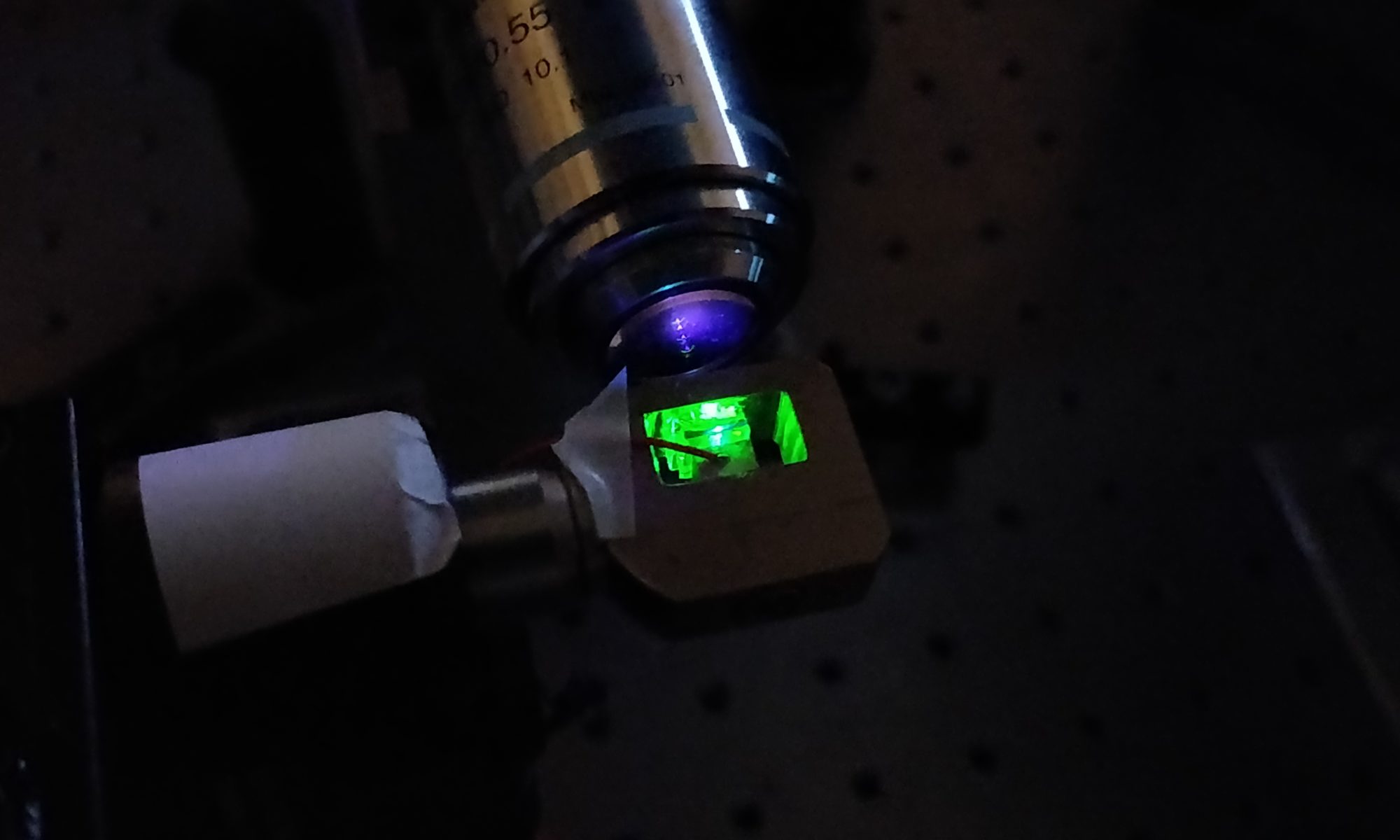![]()
In so-called strong light–mater coupling regime a new quasiparticle arise, which is a mixture between two states: a photon and an exciton. These particles are known as exciton–polaritons and they inherit properties from their constituents: low effective mass from the photon and strong interactions from the exciton.
Exciton polaritons are observed in multiple material systems. The most popular are so-called microcavities, which are layered structures made of semiconductors by molecular beam epitaxy. Such a cavity consists of two Bragg mirrors, a specially designed stacks of semiconductors layers characterized with different refractive indices of precisely defined thickness in the range of 100 nm. Any photon between such mirrors reflects multiple time before it leaves the cavity. The longer time it spends inside the cavity, the stronger it interacts with different objects present in the same region. For this reason effective light emitters like quantum wells, which localise excitons, are placed between the mirrors. In microcavities of sufficient quality interactions between photons and excitons can be so strong, that new mixed quasiparticle arises, known as exciton polariton, are formed. Nowadays microcavities of the highest quality are obtained from semiconductors. Properties of such structures can be modified in a significant way by doping. Especially interesting is doping with magnetic ions like manganese. Such materials are known as semimagnetic semiconductors. Due to the localised magnetic momenta of the ions such materials are significantly more sensitive to the applied external magnetic field.
Recently other realizations of exciton polaritons are of high interest. Especially intensively studied are properties of two-dimentional thin flakes of transition metal dichalcogenides.Those materials have crystallographic structure similar to that of graphene, but have non-zero band gap. They can be used for fabrication of transistors or light emitting diodes. Excitons in those materials are are so strongly bound, that they are stable even at room temperature. In addition their band structure consists of two distinguished minima called valleys. Interestingly, excitons can be selectively excited to only one of this valleys by properly polarized light, what in the future can be in future used to store and readout the information.
In our work we would like to realize an hybrid of three different quasipatricles: photon confined in a cavity, exciton in a transition metal dichalcogenide and exciton in semimagnetic semiconductor. Such combination allows for taking advantage of the most valuable properties of each component: low effective mass from the photon, sensitivity to magnetic field from the semimagnetic exciton and valley properties from exciton in transition metal dichalcogenides.
To realize this goal we propose an open tunable cavity consisting of a distributed Bragg reflector with deposited thin transition metal dichalcogenide flake and a semiconducting half-cavity with quantum wells doped with magnetic ions. Energy of a photon confined in such a cavity strongly depends on the distance between the mirrors. Our earlier results show that this property can be used to tune the cavity by placing one of the mirrors on a piezoelectric actuator, which allows for precise control over the separation length between the mirrors.
We will perform angle-resolved reflectance and photoluminescence spectroscopy, with the special attention to any nonlinearities observed in the emission. Analysis of the light incident on the sample at different angles allows for direct measurement of the energy dependence on the exciton–polaritons wave vector (propagation direction inside a crystal). Application of external magnetic field allow for splitting of the spin components of exciton–polaritons and selective addressing each of them by circularly polarized incident light. Such experiment will allow for creation of a spin-polarized excitons only in one of the valleys with reduced inter-valley scattering. This will contribute to the development of so-called valleytronics, an optoelectronics in which spin properties of particles are used. In the case of observation of nonlinear light emission, this will open a way for investigation of spin interactions in hybrid polaritons.

